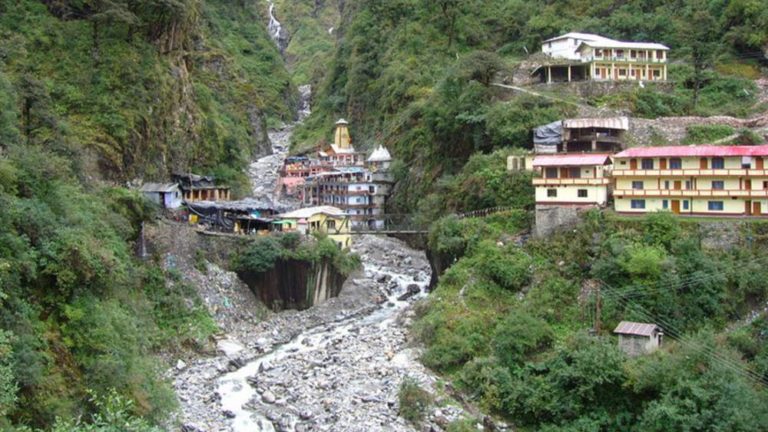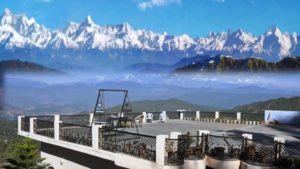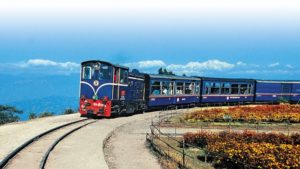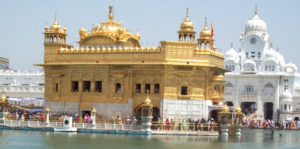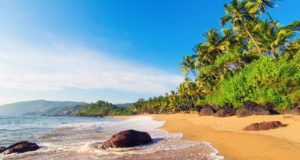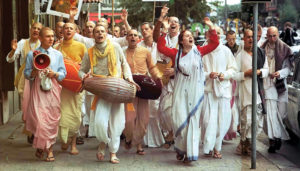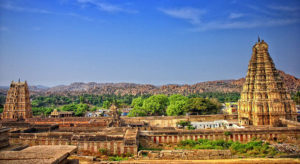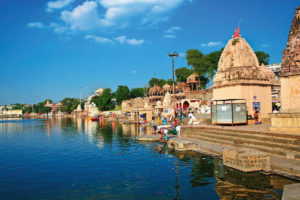Most followers of the Hindu Sanatana dharma yearn to, at least once in their lifetime, visit the four most sacred and divine shrines dedicated to Lord Vishnu and His other forms. Char Dham Yatra (pilgrimage to four divine abodes of the Lord) in four different corners of the country – Badrinath (north), Rameshwaram (south), Jagannath Puri (east) and Dwarka (west) – is performed by devotees and tourists as well.
Likewise, a Chhota Char Dham yatra (mini pilgrimage) is undertaken by those who can’t perform pilgrimage to four corners of the country. This includes the holy shrines of Kedarnath, Badrinath, Yamunotri and Gangotri. These are the sources of Holy Rivers: Yamunotri temple, where the Yamuna originates; Gangotri, the origin of Ganga; river Mandakini at Kedarnath; and river Alaknanda at Badrinath. All the places are situated in Uttarakhand also known as devbhoomi (land of gods).
Chhota Char Dham is well connected by road, railways and airway. We took off from Mumbai airport to Dehradun’s Jolly Grant airport. I, along with my daughter, had booked a 10-day packaged tour with an operator. It was last year November, the places were less crowded due to Covid. The flight took less than two hours. We were greeted by our car driver outside the airport who took us to the hotel nestled in the midst of village Barcot via Mussoorie Lake and Kempty Fall. The next morning at 5 a.m. we took a drive to Janki Chatti and started our trip to Yamunotri, which is 6 kilometres by trek or can be reached on a mule or by palanquin, carried by four people. There are almost 2600 steps to reach the Yamuna kund where we took bath. One thing which I disliked was that the kund for ladies was not maintained properly and there were no tube lights/bulbs and no doors. It’s a warm water kund and after this only pilgrims can take the darshan of Yamunaji and return to Janki Chatti.
Yamunotri temple
The Yamunotri temple was built by Maharani Gulariya of Jaipur in the 19th century. It was destroyed twice and rebuild again. Here one can cook rice by tying it in a piece of cloth and keeping it in the hot water kund. Pilgrims take this half-cooked rice to their homes as Prasad. There is a number of thermal springs which flow into numerous pools. The most important is Surya kund. After darshan and puja, we collected the prasad of half-cooked rice and started our journey towards Janki Chatti. Suddenly it started raining. Also, it became very dark. But the men carrying Palaki were walking with ease in the pitch dark. We reached Janki Chatti by 7 Pm and drove back to our hotel in half an hour.
Uttarkashi
The next day we drove 45 km to Uttarkashi, situated on the banks of river Ganga, checked into a hotel, and stayed overnight. Uttarkashi is home to a number of ashram temples. The name of the town reflects its similarity to the location as north of the city is Kashi or Varanasi. Third-day early morning we drove to Gangotri where we took a holy dip in the Ganges which is also called Bhagirathi at its origin. After pooja and darshan, we relaxed for some time in the lovely surroundings. Later we drove back to Uttarkashi and stayed overnight at a hotel. The Gangotri temple was constructed by the Gorkha General Amar Singh Thapa in the 18th century at the bank of Bhagirathi.
Guptkashi
The fourth day after breakfast we checked out and stayed overnight at Guptkashi. On the fifth day at 4 a.m., we proceeded to Sonprayag. Here one can either trek or take a chopper for Kedarnath and return back to Sonprayag. We already had a reservation for a chopper that normally takes just 5-6 minutes to reach. But it took more than 2 hours in the queue on both legs of our journey. Before boarding, we were told to check our weight. Normal ticket is for travellers weighing up to 80 kgs. More than 80 kgs, one has to pay Rs 150/- per extra kg. At Kedarnath, the view is spectacular and breathtaking. It was bright, sunny and very cold. People were wearing masks. We were lucky to get darshan within 5 minutes. After the recent deluge and flood, which destroyed the entire marketplace, the repairing work has been done very nicely and there was no sign of devastation. On our return, we stayed at the hotel in Guptkashi.
Kedarnath
Kedarnath is one of the 12 Jyotirlings of Shiva which is situated against the backdrop of the Kedarnath range. Kedar is another name of Lord Shiva. The Pandavas after having won over the Kaurava, felt guilty of having killed their own siblings sought the blessings of Lord Shiva for redemption. Lord Shiva eluded them repeatedly and while fleeing took refuge at Kedarnath in the form of a bull. On being followed, he dived into the ground leaving his hump on the surface. The remaining portion of lord Shiva appeared at 4 other places and are worshipped there as his manifestations. The arms appeared at Tungnath, the face at Rudranath, the belly at Madhmaheshwar and his locks (hair) with head at Kalpeshwar. Kedarnath and the four above mentioned shrines are called Panch Kedar. On the 6th day, after breakfast, we drove to Badrinath. We took bath in the Tapt Kund, had the darshan of Badrivishal. There was an aarti in the evening.
Other interesting tourist spots like Mana village, Vyas Gufa, Charan Paduka, Bhimkund and the Mukh of Saraswati River are all within 3 kilometres of Badrinath, which is one of the ancient pilgrim spot, situated at an elevation of 3133 metres, guarded on either side by the two mountain ranges known as Nar and Narayan. The towering Neelkanth peak provides a splendid backdrop. It was once carpeted with wild berries thus the place got the name Badrivan means forest of berries.
Tapt kund
Some important points are – Tapt kund, a natural thermal spring on the bank of river Alaknanda where it is customary to bathe before entering the Badrinath temple; Mana village, inhabited by Indo-Mongolian tribe and the last Indian village before Tibet; Vasundhara is a magnificent waterfall, 5 kilometres from Badrinath out of which two kilometres is motorable; Bheem Pul is on the other side of Mana village, a massive rock forming the natural bridge lies over the roaring Saraswati river. It represents a very spectacular view of water thundering down through the narrow passage under the Rock and is believed to have been placed by Bhim, one of the Pandavas. Lastly the Vyas Gufa – a rock cave, near Mana village where Ved Vyas is believed to have composed the Mahabharata.
Rudra Prayag
On seventh, we drove for Rudra Prayag via Joshimath, which is situated on the slopes above the confluence of the rivers Alaknanda and Dhauli Ganga. Rudraprayag is one of the Panch Prayag that is five confluences of Alaknanda River. It is a confluence of rivers Alaknanda and Mandakini. Kedarnath is situated 86 kilometres away. Of the four math established by Adi Shankaracharya, Joshimath is the winter seat of Badrinath where the idol is brought and installed in the temple for people to worship. Amongst many other temples there, the most important is the Neer Singh temple. It has the idol of Lord Shiva whose left arm is getting destroyed with time. Popular belief holds that the day the arm completely withers Badrinath valley will cease to exist and the god will transfer the resident into the neighbouring Niti Valley at Bhavishya Badri.
Haridwar via Rishikesh
The next day we drove for Haridwar via Rishikesh, the place of sages on the bank of Ganga surrounded by Shivalik range on three sides. It is said that when Raibhya Rishi did hard penances God appeared by the name of Rishikesh and this area henceforth came to be known as Rishikesh. We visited Rishikesh temples and other sightseeing like Lakshman Jhula and Ram Jhula. We spent the night at a Haridwar hotel. Early morning we went for Ganga Aarti at 5 o’clock. After two hours we were heading towards Dehradun airport to be back to Mumbai, our final destination, our home.
(The author can be contacted at [email protected])




